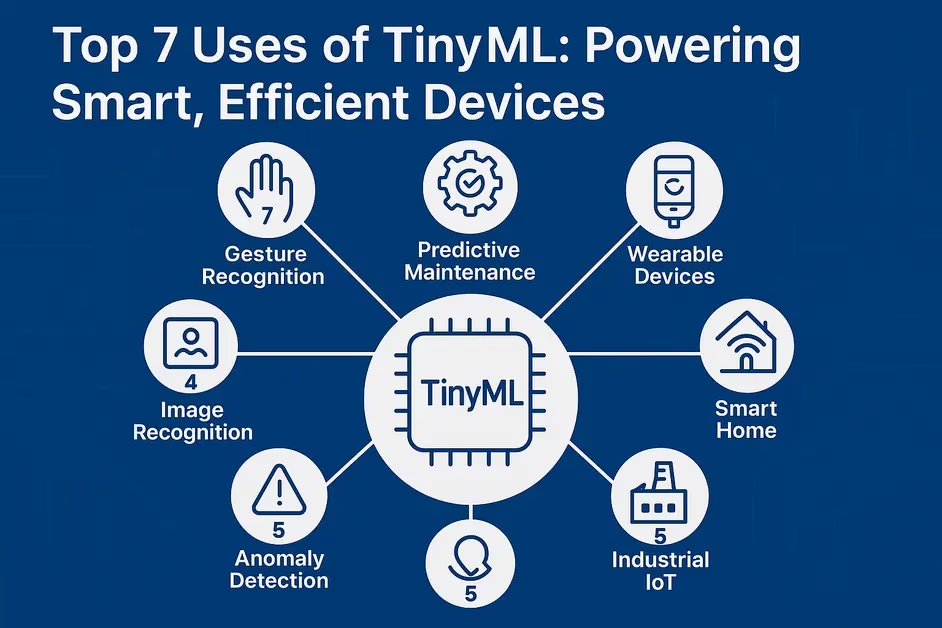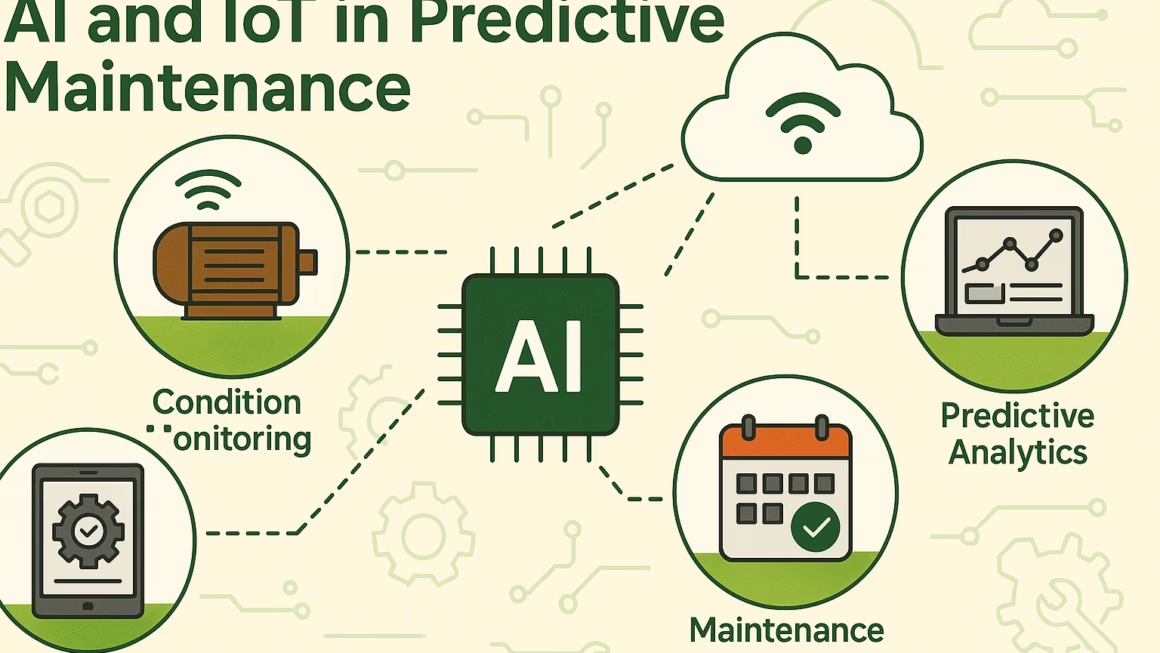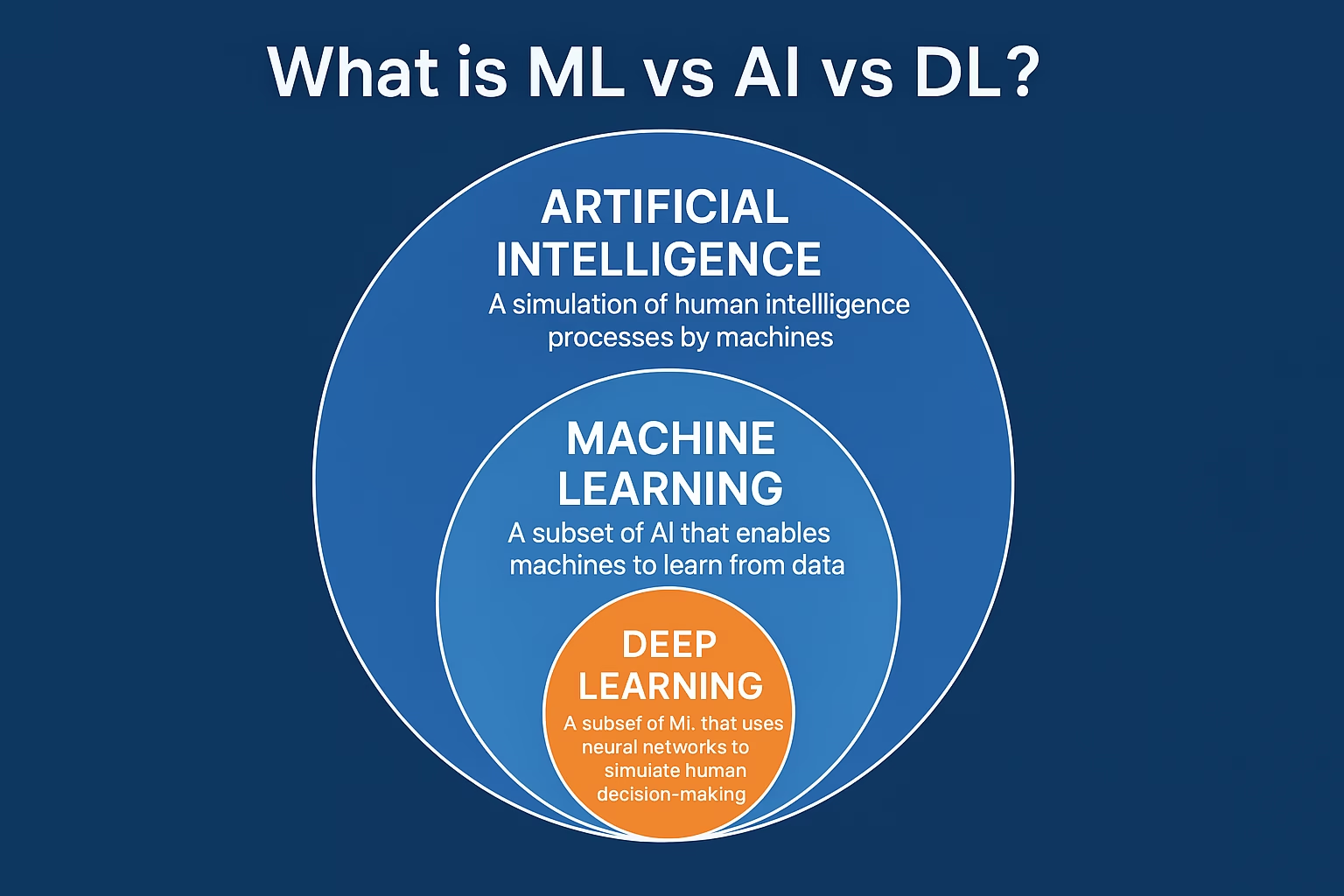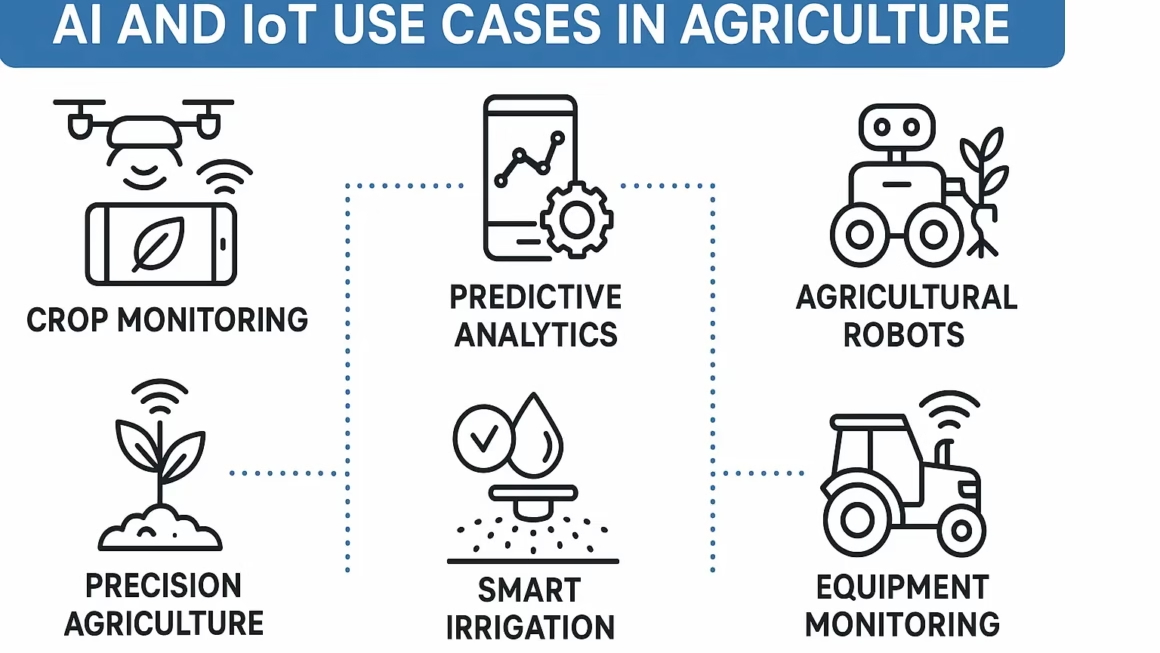What is TinyML Used For?
The technological aspect of machine learning (ML) has enabled advancements in different areas such as online recommendation systems and autonomous vehicles. Before the advent of TinyML machine learning models functioned best on servers connected to cloud systems for their operation. Various applications need computation tasks to happen directly on low-resource devices which maintain small memory footprints while operating under strict power limits. TinyML represents the newest category of machine learning which operates on restricted devices like microcontrollers.

Tiny Machine Learning which abbreviates to TinyML describes the application of machine learning on low-powered computing devices near network endpoints. Devices with solitary CPU power along with stringent memory constraints and brief battery existence comprise most of these devices. TinyML gives small devices the capacity to execute ML inference directly on board while eliminating their need for cloud connectivity. A wide range of industry possibilities become accessible through devices that possess local processing capabilities.
This article investigates TinyML practical applications while discussing its significance and operational method and showing its real-world application areas.
The Essence of TinyML
The basic meaning of TinyML becomes more clear when we first understand its fundamental characteristics. The demand for minimal processing capabilities of TinyML models enables trained ML programs to operate on devices with restricted capacities like RAM quantities under 400 KB with slow CPU performance. The devices implementing TinyML technology may include embedded sensors and wearables and IoT (Internet of Things) devices.
TinyML models handle their data processing directly on the device where data originates rather than transmitting them to remote cloud servers. The technique prevents network delays and enhances data security.
The Primary Applications of TinyML
TinyML enables sophisticated model execution on tiny devices which leads to multiple practical uses. The following paragraphs examine some prominent utilization of TinyML technology.

1. Voice and Audio Recognition on Edge Devices
The recognition of speech and audio stands as one of the main fields where TinyML technology finds application. Smart home assistants with popular voice recognition capabilities process “wake words” such as “Hey Siri” or “OK Google” through TinyML models that execute locally on the microphone module. The device maintains instant responsiveness because it operates locally from its position in the device thus avoiding continuous streaming to cloud servers while saving energy and protecting user privacy.
Modern hearing devices such as smart earbuds and hearing aids utilize TinyML models to deliver prompt noise suppression features and voice activity detection alongside adaptive sound control capabilities to users.
2. Environmental Monitoring and Sensing
The embedded environmental monitoring devices benefit optimally from TinyML because these systems require local processing of air quality data alongside gas leak detection and measurements of temperature and humidity levels. Such sensors analyze their processed data near their location to find unsafe situations or irregularities which allows quick alert generation. TinyML models operate independently to detect building carbon monoxide dangers by analyzing sensors independently of cloud services.
The application plays a fundamental role in industrial operations and agricultural activities and smart city infrastructure that needs devices to function without interruptions.
3. Predictive Maintenance in Manufacturing
The manufacturing industry can employ TinyML-enabled sensors to integrate with manufacturing equipment for the detection and evaluation of vibrations temperatures and sounds. These edge sensors analyze processed local data using TinyML models to check for machine wear indications which signal potential equipment failure. By performing maintenance before equipment failure occurs businesses can cut expenses apart from decreasing production interruptions through predictive maintenance techniques.
4. Image and Gesture Recognition
By utilizing TinyML within embedded cameras these devices can recognize objects and faces together with reading hand gestures in smart home settings and retail environments. A smart security camera monitors person approaches using TinyML to differentiate between familiar family members and possible intruders. The technology known as gesture recognition enables smart lighting and TVs to understand simple hand gestures which subsequently allows users to control these systems without any technical complexity.
5. Health Monitoring and Wearables
TinyML functions as a vital component that powers health-tracking devices together with wearables. TinyML enables fitness bands along with smartwatches to gather heart rate and step count and sleep stage bio-signals which allow them to generate customized health feedback directly on the device. TinyML provides the capability to detect arrhythmia and falls in real-time while functioning autonomously from constant cloud processing.
Medical implants together with monitoring devices benefit from TinyML since it enables lower power use and enhanced reliability along with better data privacy.
6. Industrial IoT and Automation
Industrial automation systems process input information through TinyML-embedded sensors and actuators for immediate control system monitoring and analysis functions. The embedded systems employing TinyML can maximize their energy efficiency while also improving quality measures and automation flows independently from cloud-centered operations. Production line defects can now be detected through local sensor or camera analysis which results in immediate corrective actions by TinyML.
7. Energy Management and Smart Infrastructure
Systems based on TinyML create energy-efficient buildings that implement self-adaptive HVAC control decisions and lighting adjustments through sensor data analysis. The analysis of occupancy patterns along with environmental conditions through TinyML models takes place within the device for optimizing respective usage.
Why Use TinyML?

The practical nature of TinyML functions as more than mere novelty technology because it solves key challenges that standard ML systems experience.
Latency Reduction
When ML processing happens locally it minimizes response time compared to cloud-based processing. The timely operation of applications that utilize voice recognition, gesture control, and anomaly detection depends on local responses within milliseconds because any delay that exists between cloud-server communication would be unacceptable.
Privacy and Security
Worker data protection occurs at the level of the device because sensitive input such as healthcare records and voice recordings and image files do not leave the device which results in better privacy along with reduced data breach risks.
Bandwidth and Cost Efficiency
Lowering operational expenses becomes possible because on-device data processing reduces the amount of information networks must transmit. The processing of many devices that produce big sensor data volumes requires this capability to be effective.
Reliability and Accessibility
TinyML devices become suitable for unconnected settings such as agricultural fields and industrial locations because these devices work without requiring network access.
Battery Life
Because of their energy-efficient model optimization TinyML extends device battery life which is particularly important for wearable technology and battery-operated sensors.
Technical Challenges and Considerations
TinyML deployment brings specific challenges to implementation while delivering various benefits to the system:
The models utilized in TinyML require highly compressed and pruned structures but these measures might decrease accuracy levels.
Development faces restrictions because microcontrollers analyze information with limited processing capabilities and storage capacity compared to standard processors.
The deployment of TinyML models across multiple devices poses challenges regarding update processes since federated learning and over-the-air updates represent innovative solutions to address this complexity.
TinyML devices expose themselves to physical tampering threats because of their lack of protection. The security approach must include protection measures for both programming code and equipment foundations.
The Future of TinyML
More efficient and powerful hardware dedicated to ML by chip manufacturers will lead TinyML to become prevalent in numerous IoT devices. Framework solutions such as TensorFlow Lite for Microcontrollers and Edge Impulse among others simplify the creation and implementation of ML models.
The standard approach in the future will involve TinyML performing local inference while cloud ML handles complex analytics and continual learning tasks.
The evolution of smart hardware technologies will create intelligent systems embedded within small affordable devices which experts anticipate will drive advancements in smart homes alongside autonomous drones and healthcare diagnostics and environmental monitoring and industrial automation.
Conclusion
The edge computing realm receives a transformation because TinyML enables machine learning operations within small power-efficient hardware. TinyML technology provides the ability for billions of devices to operate more intelligently and rapidly while remaining autonomous through mechanisms such as voice assistants and health monitors and industrial IoT systems and smart cities functions.
TinyML enables proximity of intelligence to production data which delivers decreased latency together with improved privacy alongside reduced power consumption and augmented dependability to enable widespread AI adoption throughout essential infrastructure and daily objects.




One thought on “Top 7 Uses of TinyML: Powering Smart, Efficient Devices”